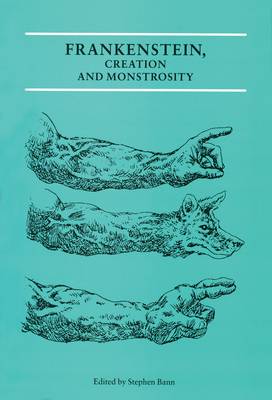CRITICAL VIEWS
2 total works
Some of the most significant currents in modern intellectual and cultural history pass by way of Mary Shelley's "Frankenstein". By choosing as a guiding theme the idea of the scientist who creates a monster, she both revived for the Romantic period the traditional link between scientific experiment and natural magic, and made her own contribution to the debate on the difference between "creation" and "production" that was flourishing among the natural scientists of her time. "Frankenstein" thus signals an integration of the broad issues of contemporary science and culture, within the form of a popular fiction. In this way, it stands at the head of a productive tendency which is marked, over the next century, by related works such as Bram Stoker's "Dracula" and H.G. Wells's "The Island of Doctor Moreau". Common to these works is a fascination with the ethics of creation, and the phenomenon of monstrosity, which provokes interesting questions about the place of the monster in Western visual culture - questions which are addressed by the essays in this book.
The authors are Michael Grant, Elisabeth Bronfen, Louis James, Robert Olorenshaw, Michael Fried, Crosbie Smith, Ludmilla Jordanova and Jean-Louis Schefer.
The authors are Michael Grant, Elisabeth Bronfen, Louis James, Robert Olorenshaw, Michael Fried, Crosbie Smith, Ludmilla Jordanova and Jean-Louis Schefer.
This title includes essays by Elisabeth Bronfen, Crosbie Smith, Ludmilla Jordanova, Louis James, Michael Fried, Michael Grant, Jasia Reichardt, Robert Olorenshaw and Jean-Louis Schefer. Some of the most significant currents in modern intellectual and cultural history pass by way of Mary Shelley's Frankenstein (1818). By choosing in her book as a guiding theme the idea of the scientist who creates a monster, she both revives for the Romantic period the traditional link between scientific experiment and natural magic, and makes her own contribution to the debate on the difference between 'creation' and 'production' that was flourishing among the natural scientists of her time. Frankenstein thus signals a remarkable integration of the broad issues of contemporary science and culture within the form of a popular fiction. In this way, it stands at the head of a productive tendency which is marked, over the coming century, by related works like Bram Stoker's "Dracula" and H. G. Wells' "The Island of Doctor Moreau".
Common to all these works is a fascination with the ethics of creation, and the phenomenon of monstrosity, which provokes interesting questions about the place of the monster in Western visual culture.
Common to all these works is a fascination with the ethics of creation, and the phenomenon of monstrosity, which provokes interesting questions about the place of the monster in Western visual culture.

